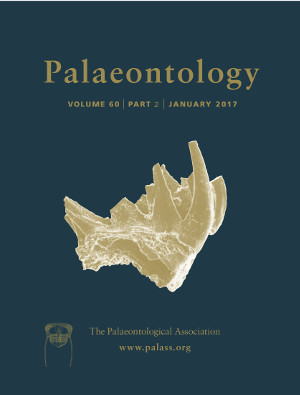Reg. Charity No. 1168330

As sessile, benthic filter feeders, brachiopods share an intimate relationship with their chosen substrate. Individuals of Micromitra burgessensis in the Burgess Shale Formation are preserved in life position, attached to a range of hard substrates, including skeletal debris, conspecific brachiopods, sponges and enigmatic tubes. Here we investigate the phenotypic variability of M. burgessensis associated with differing substrate attachments. We apply geometric morphometrics to test for variation by plotting landmarks on the exterior of ventral and dorsal valves of M. burgessensis specimens that are preserved attached to different substrates. Using principal component, canonical variate analyses and anova, we determine that there is some variation in shape related to substrate. Canonical variate analyses, for ventral valves and dorsal valves, indicate that specimens attached to the same substrate are recognizable in shape from specimens attached to other substrate types. The strength of differentiation however, is not robust and combined with our discriminate analysis of separate populations suggests that there is the potential for substrates to exercise only weak control over the morphology of Brachiopoda.